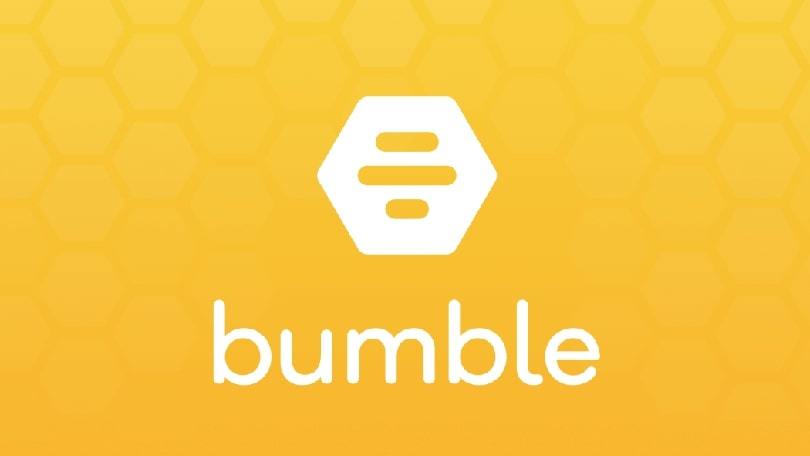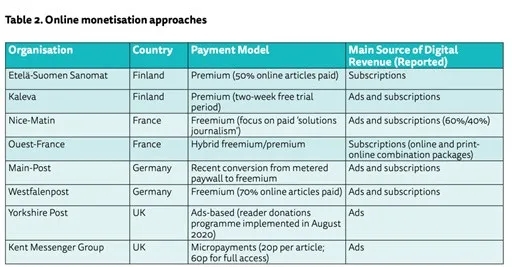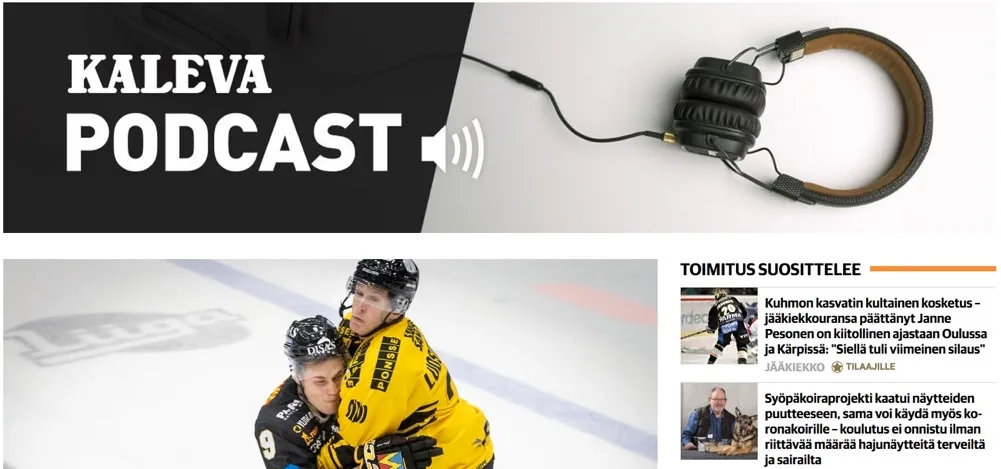Local News’ Transition to Paid Content In the Context of Layoffs, Mergers and Bankruptcies II
Seven Predictions on Global Mobile Games in 2021 (Ⅰ)
Free Fire Shows Strong Momentum, with Its Revenue Overtaking PUBG Mobile in a Single Market for Q1 2021
Weighing the Pros and Cons: Using a Personal Loan to Tackle Credit Card Debt.
Playrix downloads exceed 1 billion
With monthly subscription of USD14.99 in Ubisoft, you can enjoy hundreds of 3A games!
The Games Fund Launched a $50 Million Early Investment Fund to Invest in American and European Companies




Discovery: Monetizing Content
The most significant aspect of digital transformation at the newspapers in the sample is the emphasis on paid-content models online. Legacy publishers around the world have continued to turn away from advertising models and toward subscription, membership, and other paid strategies to enhance digital revenues, with some larger brands drawing significant numbers of subscribers. However, this ‘winner-takes-most’ trend disadvantages smaller outlets, particularly in a mobile- and platform-driven environment.
The local and regional newspapers in the sample have incorporated various forms of paid content, including metered paywall, ‘freemium’, and ‘premium’ models. Some have only recently implemented paid models, while others have had them in place for years. Across the board, interviewees continue to experiment with their strategies to determine which types of content are most likely to draw paid subscribers.

Noted: ‘metered paywall’ and ‘freemium’ represent two different paid models. The metered paywall allows users to view a specific number of articles before requiring paid subscription. Freemium is a portmanteau of the words “free” and "premium". In this model, contents are divided into “basic content” and “premium content”. Users are not allowed to read “premium content” unless they pay for them.
Producing Value-Added Journalism
The move to paid-content models has, for news organizations across the sample, led to a heightened focus on producing high-quality local journalism that appeals to loyal readers. Although interviewees said their newsrooms continue to produce the traditional daily news that consistently draws online audiences, including traffic, weather, courts, crime, breaking news, and other topics, they have also invested resources into producing in-depth investigations and long-form human-interest stories.
This value-added content prioritizes original reporting with a local focus over stories that draw the most traffic and reflects diverse understandings of what constitutes quality journalism, from in-depth articles about history, people, sports, culture, and infrastructure, to service-oriented features offering advice on navigating day-to-day life in cities. Newsrooms are also pursuing data-driven reporting, solutions journalism, and new digital offerings, particularly podcasts.
For example, Kaleva’s sports reporters launched a paid podcast in early 2020 with guests such as local coaches and athletes. Ouest-France works with its four radio stations and independent producers to offer two to three free podcasts daily, attracting about 500,000–600,000 listens per month. The podcasts are advertising-supported, but Edouard Reis Carona said subscriber-only content is a possibility:
 “The only thing we are sure of is that without any value, there is no subscription. To hope for subscriptions just because of the name of a brand is useless. The only thing which makes the difference is the content. Something different than what they get from the other media. Before, we were a printed newspaper. Now we are a press brand on all possible media, and the target is to provide information on all available channels.”
“The only thing we are sure of is that without any value, there is no subscription. To hope for subscriptions just because of the name of a brand is useless. The only thing which makes the difference is the content. Something different than what they get from the other media. Before, we were a printed newspaper. Now we are a press brand on all possible media, and the target is to provide information on all available channels.”
Newsletters are another important way to reach readers for many of the news organizations. Westfalenpost produces a daily news-focused newsletter for all readers and newsletters from its local bureaus and is testing whether automatically produced or journalist-produced newsletters are more effective. Ouest-France offers newsletters for the larger towns it covers as well as newsletters on running, technology, religion, military, family, and other topics. Overall, these newsletters draw 900,000 subscribers.
Streamlining Digital Content Production
As the news organizations embrace and refine paid-content models, they have adjusted their editorial strategies accordingly, reconfiguring their newsrooms to identify and produce distinctive digital content that not only attracts readers but also spurs attention and engagement. Some newsrooms, particularly in Germany, engaged in multi-year initiatives to develop more efficient and sustainable approaches.
Other interviewees discussed the creation of new newsroom roles, such as those focused on breaking online news, in-depth features, or new product development. Some also took advantage of opportunities for collaboration, such as between editorial and commercial departments, and opportunities for sharing local, national, and international content among company holdings.
Rethinking Relationships with Platforms
Facebook has been a vital source of traffic, accounting for 15–40% of readership for the local and regional news organizations in the 2018 Reuters report. However, many interviewees were concerned about their dependence on the platform, as it rarely serves as a revenue driver and the algorithm could change on a whim.
Since then, Facebook has publicly expressed its support for local news, launching the Facebook Community News Project in the UK in 2018 and merging Today In and Facebook News to prioritize local publications in June 2020. Even so, several newsrooms in this report have strategically reduced their reliance on the platform, recognizing that traffic did not always translate into loyal, paying readers.
Although interviewees expressed some frustration at the lack of transparency from Facebook, they highlighted the benefits of the platform in allowing them to broaden and diversify their readership. They also highlighted the potential of social media in helping them deepen connections with their audiences, such as through reader-engagement initiatives. Therefore, interviewees discussed Facebook less as a ‘necessary evil’, as it was described in the 2018 report, and more in terms of a symbiotic relationship.